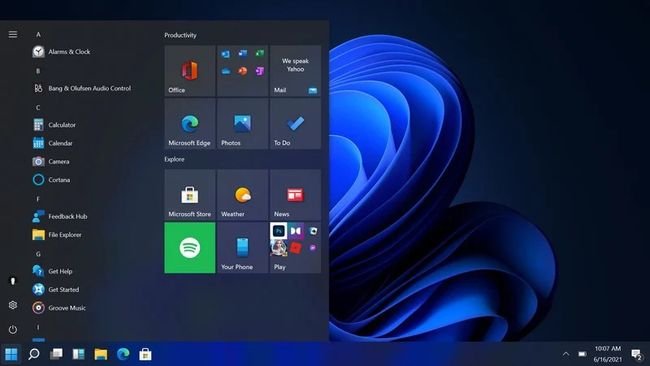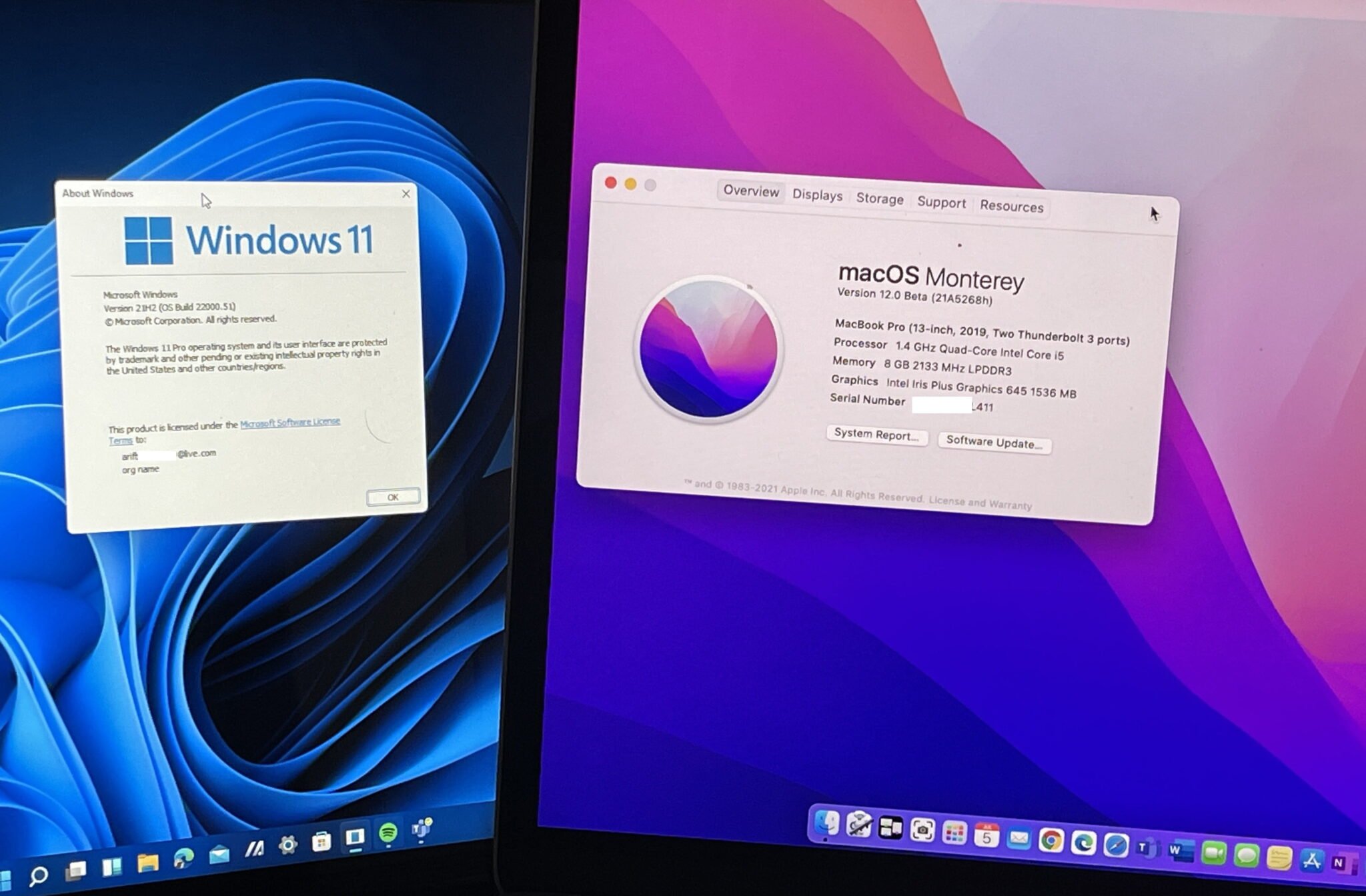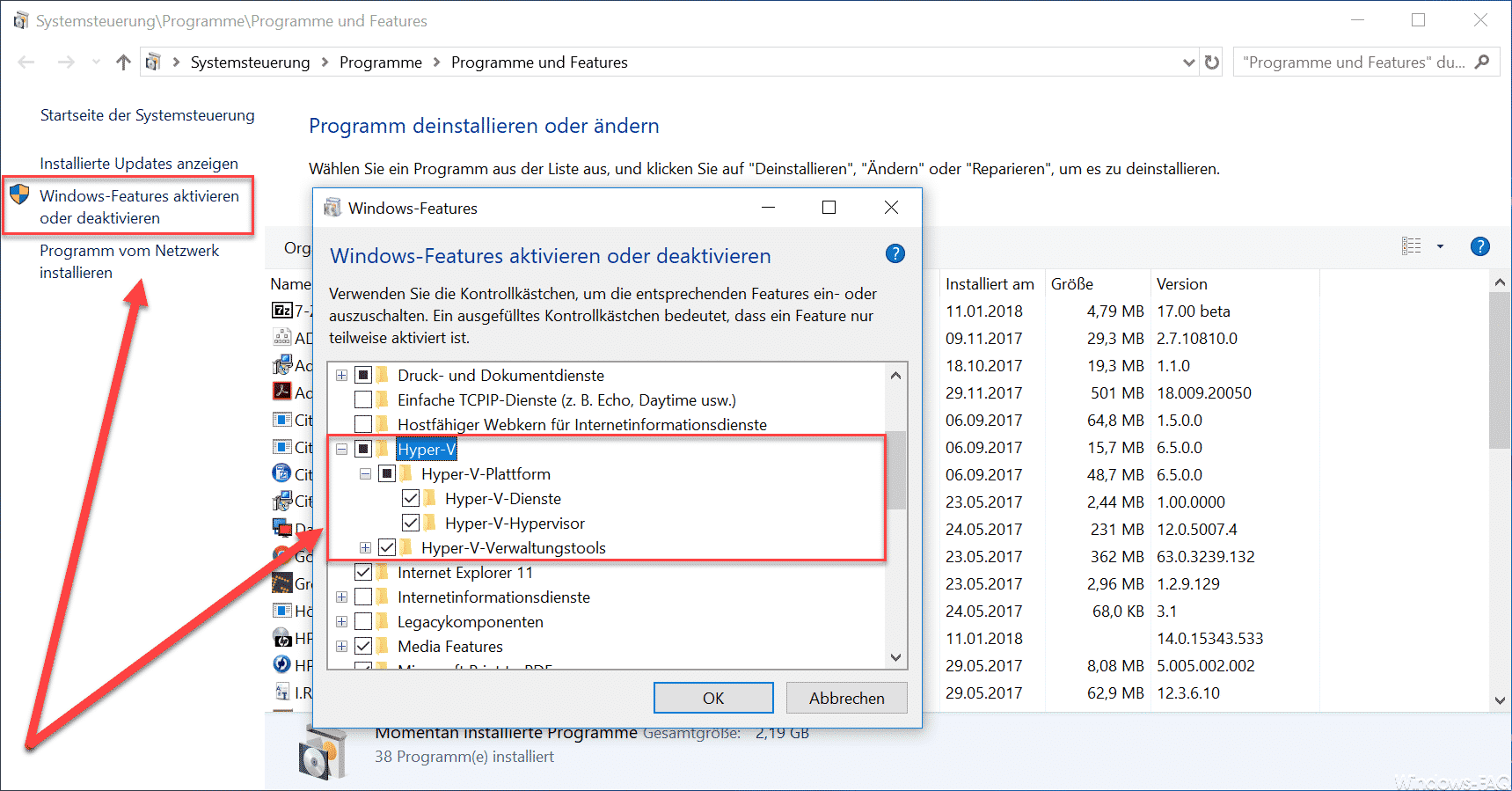Windows 11 Vs Windows 10 Requirements He also acknowledged the expansion of Microsoft Store to include more "traditional" desktop applications. In addition to increased reliability, the supported processors increase security capabilities at the chip level. These processors provide virtualization extensions and virtualization performance improvements. Windows 11 supports virtualization-based security which enables several security capabilities, including memory integrity, also known as hypervisor-protected code integrity .
HVCI also provides driver control and ensures that all drivers loaded meet a policy of allowed drivers set by Microsoft and the user. The United States Department of Defense requires virtualization-based security on Windows 10 for their devices. In partnership with our OEM and silicon partners, we will be enabling VBS and HVCI on most new PCs over this next year. And we will continue to seek opportunities to expand VBS across more systems over time.
Cunningham concluded that "as I've dug into and learned its ins and outs for this review, I've warmed to it more", but argued that the OS was facing similar "public perception" issues to Windows Vista and Windows 8. Internet Explorer has been replaced by the Chromium-based Microsoft Edge as the default web browser, and Microsoft Teams is integrated into the Windows shell. Microsoft also announced plans to allow more flexibility in software that can be distributed via Microsoft Store, and to support Android apps on Windows 11 . Based on this comparison table, you can see that Windows 11 is more hardware-hungry. Bear in mind that these are minimum system requirements to install these Operating Systems. This means that devices can upgrade to Windows 11 and critical apps and devices will simply work.
Raising the Windows 11 minimum system requirements enables us to better support apps and hardware for drivers and devices. Feedback also shows us that unsupported hardware is more likely to have older drivers that are incompatible with new OS features such as VBS. Supported hardware also comes with modern drivers, which helps ensure not only the reliability we mentioned earlier, but also great hardware compatibility. A redesigned user interface is present frequently throughout the operating system, building upon Fluent Design System; translucency, shadows, a new color palette, and rounded geometry are prevalent throughout the UI. In October 2019, Microsoft announced "Windows 10X", a future edition of Windows 10 designed exclusively for dual-touchscreen devices such as the then-upcoming Surface Neo. Legacy Windows applications would also be required to run in "containers" to ensure performance and power optimization.
Microsoft stated that it planned to release Windows 10X devices by the end of 2020. As I mentioned earlier, these recommended requirements are the minimum computer hardware specs you need to use the Operating Systems. I learned this the hard way when I installed Windows 11 on a VMWare virtual PC with 4GB of RAM.
Windows 11 includes several new features, such as improved snapping, Dynamic Refresh Rate, and Direct Storage, but the biggest change the operating system brings could be something that people never see. A recent Microsoft Mechanics video breaks down the performance improvements included in Windows 11. Compared to devices running Windows 10 on the same hardware, PCs running Windows 11 should have better app performance, improved battery life, and quicker resume from sleep times. As part of the minimum system requirements, Windows 11 only runs on devices with a Trusted Platform Module 2.0 security coprocessor.
According to Microsoft, the TPM 2.0 coprocessor is a "critical building block" for protection against firmware and hardware attacks. In addition, Microsoft now requires devices with Windows 11 to include virtualization-based security , hypervisor-protected code integrity , and Secure Boot built-in and enabled by default. The operating system also features hardware-enforced stack protection for supported Intel and AMD processors for protection against zero-day exploits. Microsoft has said the new OS will include performance improvements, including faster logins with Windows Hello, faster web browsing and faster wake from sleep mode. Windows Hello is a biometrics-based technology that lets Windows 10 users authenticate secure access to their devices, apps and networks with iris scans, facial recognition or fingerprints.
At least 16GB of RAM The basic system requirements of Windows 11 differ significantly from Windows 10. Windows 11 only supports 64-bit systems such as those using an x86-64 or ARM64 processor; IA-32 processors are no longer supported. Thus, Windows 11 is the first ever consumer version of Windows not to support 32-bit processors and 16-bit software .
The minimum RAM and storage requirements were also increased; Windows 11 now requires at least 4GB of RAM and 64GB of storage. The compatibility list includes the Intel Core i7-7820HQ, a seventh-generation processor used by the Surface Studio 2, although only on devices that shipped with DCH-based drivers. Windows 11 SE was announced on November 9, 2021, as an edition exclusively for low-end devices sold in the education market, and a successor to Windows 10 S.
It is bundled with applications such as Microsoft Office for Microsoft 365, Minecraft Education Edition, and Flipgrid, while OneDrive is used to save files by default. Windows 11 SE does not include Microsoft Store; third-party software is provisioned or installed by administrators. Citing security considerations, the system requirements for Windows 11 were increased over Windows 10. While the OS can be installed on unsupported processors, Microsoft does not guarantee the availability of updates. Windows 11 also drops support for 32-bit x86 CPUs and devices which use BIOS firmware.
If your existing Windows 10 PC is running the most current version of Windows 10 and meets the minimum hardware specifications it will be able to upgrade to Windows 11. The upgrade rollout plan is still being finalized, but for most devices already in use today, we expect it to be ready sometime in early 2022. Not all Windows 10 PCs that are eligible to upgrade to Windows 11 will be offered to upgrade at the same time. To see if your PC is eligible to upgrade, download the PC Health Check app. Once the upgrade rollout has started, you can check if it is ready for your device by going to Settings/Windows Updates.
Even though reliability is normally my number one concern, I recently took a really big chance with regard to my laptop. The day before I was to leave for a long trip, I upgraded to Windows 11. Normally, I would never perform any sort of upgrade or major configuration change just prior to traveling, because if something were to go wrong then my ability to fix the problem while away from home might be limited. However, my experiences with the pre-release Windows 11 builds were entirely positive , so I went ahead and rolled the dice. Incidentally, I did hedge my bets a little bit by using a Microsoft Surface Book 3. I surmised that I probably wouldn't have any issues with running a Microsoft operating system on Microsoft hardware.
I haven't noticed any big performance improvements or problems running games on Windows 11. It feels exactly the same as Windows 10 for gaming, as far as I can tell. PC Gamer has noticed that Windows 11's new Virtualization-Based Security can impact gaming performance by as much as a 28 percent drop in frame rates. It's a setting that Microsoft wants PC builders to enable by default on new Windows 11 PCs, so while it won't impact people upgrading or clean installs, new gaming PCs could ship with VBS enabled. Microsoft improved the multitasking experience on Windows 11 with its new Snap Layouts feature.
While you get six handy Snap Layout options in Windows 11, Windows 11 SE simplifies this by offering only two Snap Layouts. They let you use two apps side-by-side on your laptop at the same time. Speaking of app snapping, it's also worth mentioning that all apps launch in fullscreen mode by default in Windows 11 SE. That seems right because most Windows 11 SE-backed budget laptops will ship with smaller screens. Original equipment manufacturers can still ship computers without a TPM 2.0 coprocessor upon Microsoft's approval. Some third-party software may refuse to run on unsupported configurations of Windows 11.
In January 2021, it was reported that a job listing referring to a "sweeping visual rejuvenation of Windows" had been posted by Microsoft. A visual refresh for Windows, developed under the codename "Sun Valley", was reportedly set to re-design the system's user interface. For the past six years, Windows users have watched on the sidelines as the tech landscape changed at a breakneck pace. When Microsoft's sporadic "feature updates" did arrive, they were often plagued with bugs, some so damaging the updates were suspended. And yet, despite its rocky path, Windows 10 will go down as a success, a stopgap to the mess its predecessors left behind. It brought back the traditional desktop interface, gave PC owners reliable performance, and popularized touchscreen displays and hybrid 2-in-1 laptops.
For what feels like the longest time, Windows operating systems have had a taskbar down the bottom that has a Start button on the left. Windows 11 takes a MacOS-like approach to its position with a Start button in the middle of the screen and apps around it. Initially, this design logic was intended for the cancelled Windows 10X, meant to make the interface easier to navigate for dual-screen devices. It also cleans up the entire tray area, removing the toolbar items in the far right. This is because Virtualization Based Security has become a keystone concept in Microsoft's approach to security.
VBS runs Windows on top of a hypervisor, which can then use the same techniques that keep guest operating systems apart to create secure spaces that are isolated from the main OS. Doing that requires hardware-based virtualization features, and enough horsepower that you won't notice the drag on performance. With many Windows 10 users unsure about whether they should shift due to speed and compatibility issues they may face, Microsoft rushed out a senior exec to explain whether Windows 11 speed will be up to scratch.
After all, why would a Windows 10 user want to upgrade if Windows 11 speed is not equal, or greater? Now, Microsoft has finally explained exactly why and how Windows 11 speed will be faster than the Windows 10 operating system. In the video, Steve Dispensa, VP of Enterprise Management at Microsoft talks about the key factors that make Windows 11 better than Windows. He also talks about the rationale behind Windows 11 system requirements. I've been running Windows 11 on my laptop and I enjoy the experience there, but on my desktop with three monitors, I'm holding off on upgrading.
The way I use my laptop is very different from my desktop PC, so Windows 11 fits just fine in my lap. I regularly use full-screen apps and games on my main PC, so not being able to see the time and date across multiple monitors is annoying. Coupled with the taskbar changes that prevent drag and drop, I feel less productive using Windows 11 on my main PC. So even if you want to upgrade, you'll need to check Microsoft's PC Health Check app to see if your PC will even support Windows 11. You may need to enable TPM 2.0 from your PC's BIOS settings to get Secure Boot working, or perhaps even switch how Windows is installed on your storage if you manually installed the OS.
The hardware requirements have changed a lot here, but the PC Health Check app should guide you on anything that needs addressing. For those who are using a PC that won't upgrade, and who aren't ready to transition to a new device, Windows 10 is the right choice. We will support Windows 10 through October 14, 2025 and we recently announced that the next feature update to Windows 10 is coming later this year. Whatever you decide, we are committed to supporting you and offering choice in your computing journey. If you want to see the full Windows 11 minimum system requirements, you can visit this page.
The taskbar's buttons are center-aligned by default, and it is permanently pinned to the bottom edge of the screen; it cannot be moved to the top, left, or right edges of the screen as in previous versions of Windows. The "Widgets" button on the taskbar displays a panel with Microsoft Start, a news aggregator with personalized stories and content (expanding upon the "news and interests" panel introduced in later builds of Windows 10). Microsoft Teams is similarly integrated with the taskbar, with a pop-up showing a list of recent conversations. Windows 11, the first major Windows release since 2015, builds upon its predecessor by revamping the user interface to follow Microsoft's new Fluent Design guidelines. The redesign, which focuses on ease of use and flexibility, comes alongside new productivity and social features and updates to security and accessibility, addressing some of the deficiencies of Windows 10.
As familiar as Windows 11 might be, there's still a lot that's changed. The programs you know are all still available and supported, but they'll be joined by Android apps, running as windowed programs on the desktop (though not right away — Microsoft's still fine-tuning that feature). Your favorite multitasking functions get upgraded with new Snap Layouts, and virtual desktops are getting better with more flexibility and features.
In all honesty, I think it really comes down to personal preference. If you like the new interface and your hardware can handle the upgrade, then I would say, go for it. If on the other hand, you are perfectly happy with Windows 10 then there is really no compelling reason to upgrade. This might change later on as Microsoft introduces new features into Windows 11 and brings the Android app store online. For right now, Windows 11 feels like Windows 10 with a new interface. Hence I think that at this moment in time, one operating system is probably as good as the other, and personal preference are the main things that will probably drive upgrade decisions.
The Microsoft Store app itself also feels more simplified, with a library section that lists app updates and purchases, as well as individual sections for apps, gaming, and entertainment. Combined with Microsoft's Store revenue changes, it looks like we'll finally have a single location to reliably download Windows apps and avoid running into viruses by searching for .exe files on the web. Windows 11 Home may be restricted by default to verified software obtained from Microsoft Store ("S Mode"). Windows 11 Home requires an internet connection and a Microsoft account in order to complete first-time setup. As business users often deal with especially sensitive information, there are also some extra security features in Windows 11 Pro. This feature encrypts data stored on your hard drive so no one else can access it.
Even if your computer is stolen, your files are protected from users other than yourself. For starters, there's DirectX 12 Ultimate, which has the potential to make games even prettier with higher frame rates. This latter point is a step up from the default SDR approach of older versions of Windows.
Live Tiles are gone in favour of a snapshot view of pinned apps, recently accessed files as well as the option to restart or shutdown. The good news is if a Start button in the centre is too much to handle, you can shift it back to the left-hand traditional view. What likely won't bother Windows traditionalists is that app corners, menus and File Explorer windows have been rounded off in Windows 11 rather than the typical square look of Windows 10. This article talks about the realities of being a Windows 11 user, so technically, if you're already a Windows 11 user, you won't have to deal with the minimum hardware requirements issue.
But there are still the hardware compatibility issues that come from running any new OS release. Back in October, Windows 11 had some issues with AMD chips, but that's been subsequently patched. Windows 11 has a problem with SSD NVMe drives, but you can pull down a patch via the Windows Insider program to fix it. And, of course, there is a host of other compatibility and driver problems, many of which Microsoft is aware of and working on. Windows 11 will offer more stability and better security features in the long run but that doesn't mean you need to upgrade the day it's released. Changing operating systems always takes a bit of time to get used to so it makes sense to wait until you've got a bit of time to devote to the upgrade process as well as the time it'll take to adjust your workflow.
No matter what, we recommend waiting to upgrade to Windows 11 until the applications you use have official support. And if you are thinking about upgrading to Windows 11 anyway, we would heavily caution you against doing so at this time. In most cases, we saw worse performance in Windows 11, sometimes very minor, sometimes significant.
As is typical with an OS launch, there will be many performance improvements and bug fixes coming from both Microsoft and the software developers in the coming weeks and months. Windows 11 is finally here, featuring an updated UI, better support for virtual desktops, improved window snapping, and a wealth of other changes. For details on what is new, check out our article outlining some of the more exciting features.
However, a new OS can also improve, or in some cases hinder the performance of existing applications. Windows 11 is the next major version of the Windows operating system that Microsoft plans to release this year. The launch of this OS marks exactly six years since the company last released a new version of windows.



























No comments:
Post a Comment
Note: Only a member of this blog may post a comment.